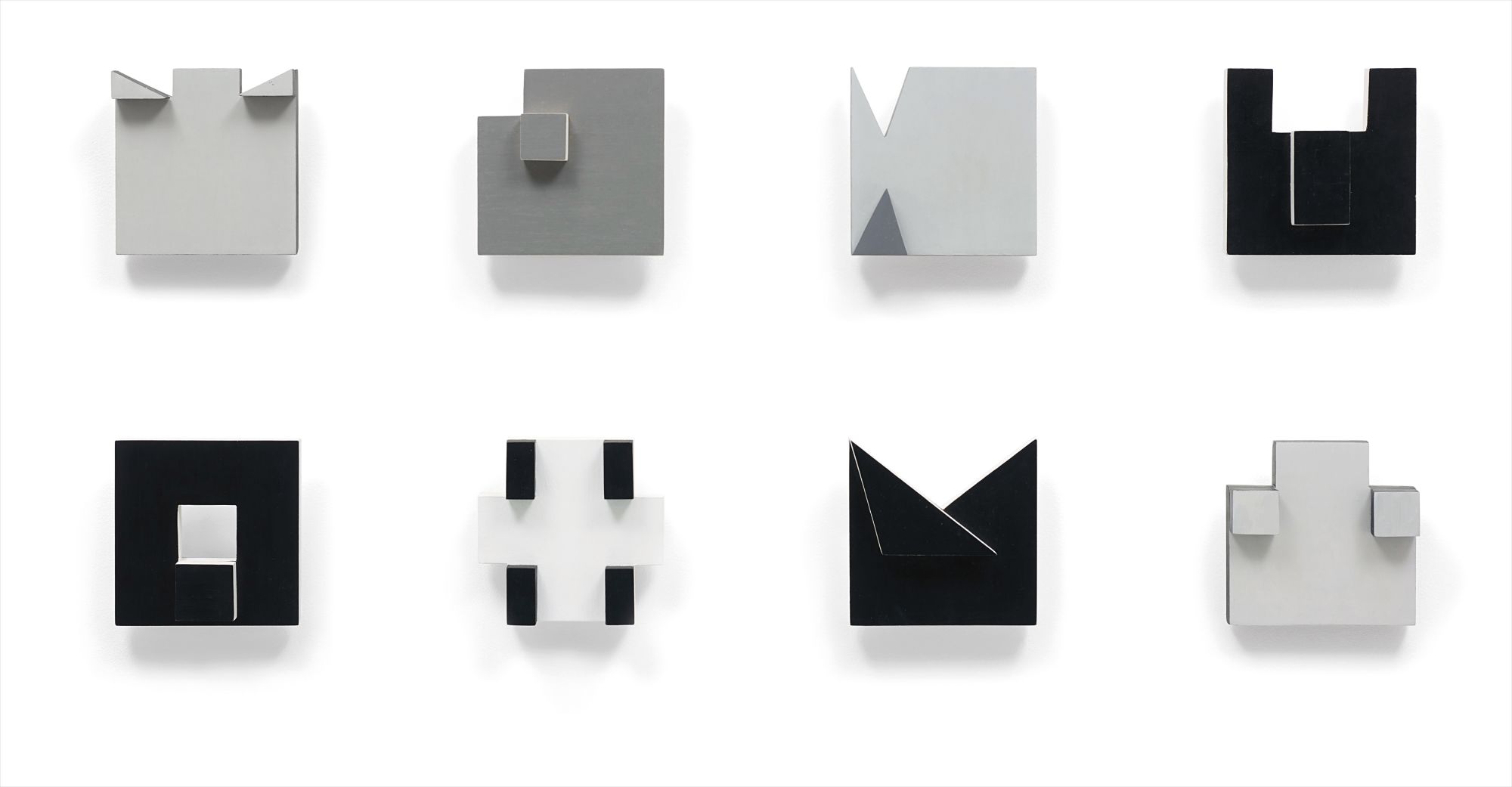

10
Lygia Pape
Livro noite e dia (Book of Night and Day)
Full-Cataloguing
Pape had previously adhered to the Concrete aesthetics of Grupo Frente in the mid-1950s, seen in her series Relevos and Tarugos; they anticipated her dismantling of the figure-ground relationship in the Tecelares, a series of woodcut prints that directly preceded her Ballet Neoconcreto I (1958) and the evolution of her extraordinary, sensorial books. “We were breaking out of the frame, moving into three-dimensional space,” Pape reflected of the early days of the Neoconcrete group, citing Clark’s Bichos (Animals, 1960-64) and Oiticica’s Parangolés (1964-79). “And I made books, only they were books without words, just colors and shapes.” First came the Livro da Criaçao (Book of Creation, 1959-60), in which the prehistory of the world unfolds through sixteen cardboard squares with cut-out shapes and folds meant to be manipulated by the active viewer; its narrative flows across space and time, moving fluidly from the plane into three dimensions and then back again, the open structure generating new meanings and self-awareness. The twelve-part Livro da Arquitetura (Book of Architecture, 1959-60) was soon followed by the Livro do Tempo (Book of Time, 1961-63) and the Livro Noite e Dia, each organized around the cycle of a year.
For Livro Noite e Dia, Pape explained, she “‘read’ the light of these 365 days,” abstracting the shifting chiaroscuro harmonies of day and night into 365 small wood squares, painted in a spare palette of white, black, and grey. The seriality of this and the other Livros conveys a sense of duration, protracting the passage of time from the creation of the work to its experience, in part or as a whole; each “day” and “night” is sui generis, and yet interconnected with the natural and universal cycles of life. The underlying geometry of Livro Noite e Dia takes its cue from Brazilian Concretism, but its thorough dissection of the square breaks the picture plane, projecting fully into the space of the viewer. “The Neo-Concrete experiment of energizing space, conveying equal values to positive-negative,” Pape wrote, “gives us an organic integration: space between solids becomes form in a continuing logical development, lending it new meaning, poetic meaning even.” A modernist book of hours, Livro Noite e Dia upends the act of reading, its meaning created in the vivência of color and form. “Although people are making plenty of art books, no one makes them like mine,” Pape rightly observed, “books conceived as formal, signifying, wordless language.”
Abigail McEwen, PhD
Lygia Pape
Brazilian | B. 1927 D. 2004Lygia Pape's diverse oeuvre includes sculpture, engraving, performance and filmmaking. Along with Lygia Clark and Hélio Oiticica, Pape was a signatory of the Brazilian Neo-Concrete manifesto, which promoted the ideal that art was not a static representation but rather organic and experiential.
Pape's oeuvre was greatly informed by the notion that art should be activated by the viewer. This tenant is best represented in the artist's 1959 Livro da Criacão (Book of Creation), in which the artist utilized geometric shapes to create 16 wood constructions, or "pages," with abstract imagery — each signifying a moment in the creation of the world. Each page is accompanied by poetic lyrics and the viewer was encouraged to touch the books and read the poetry aloud.